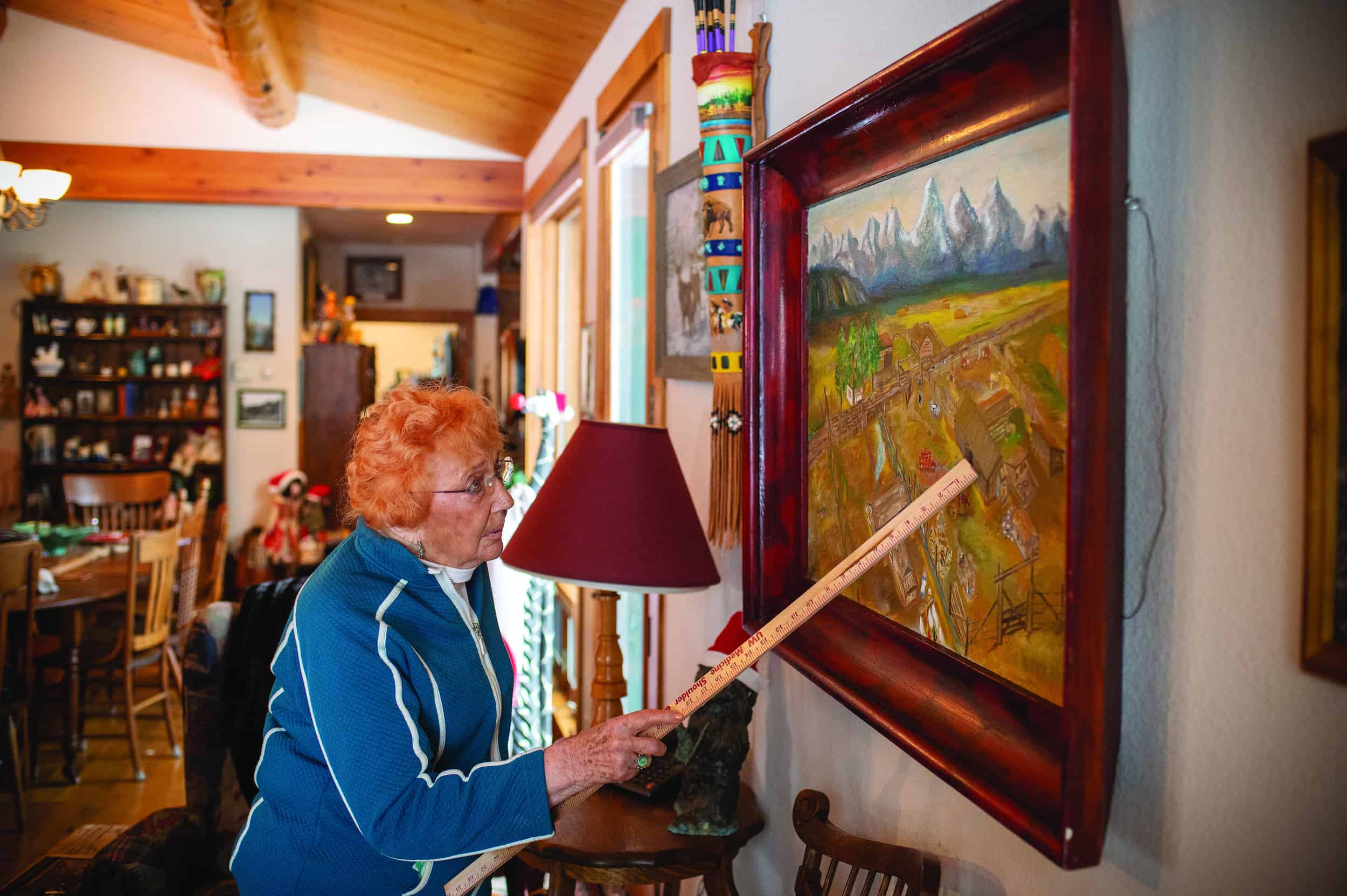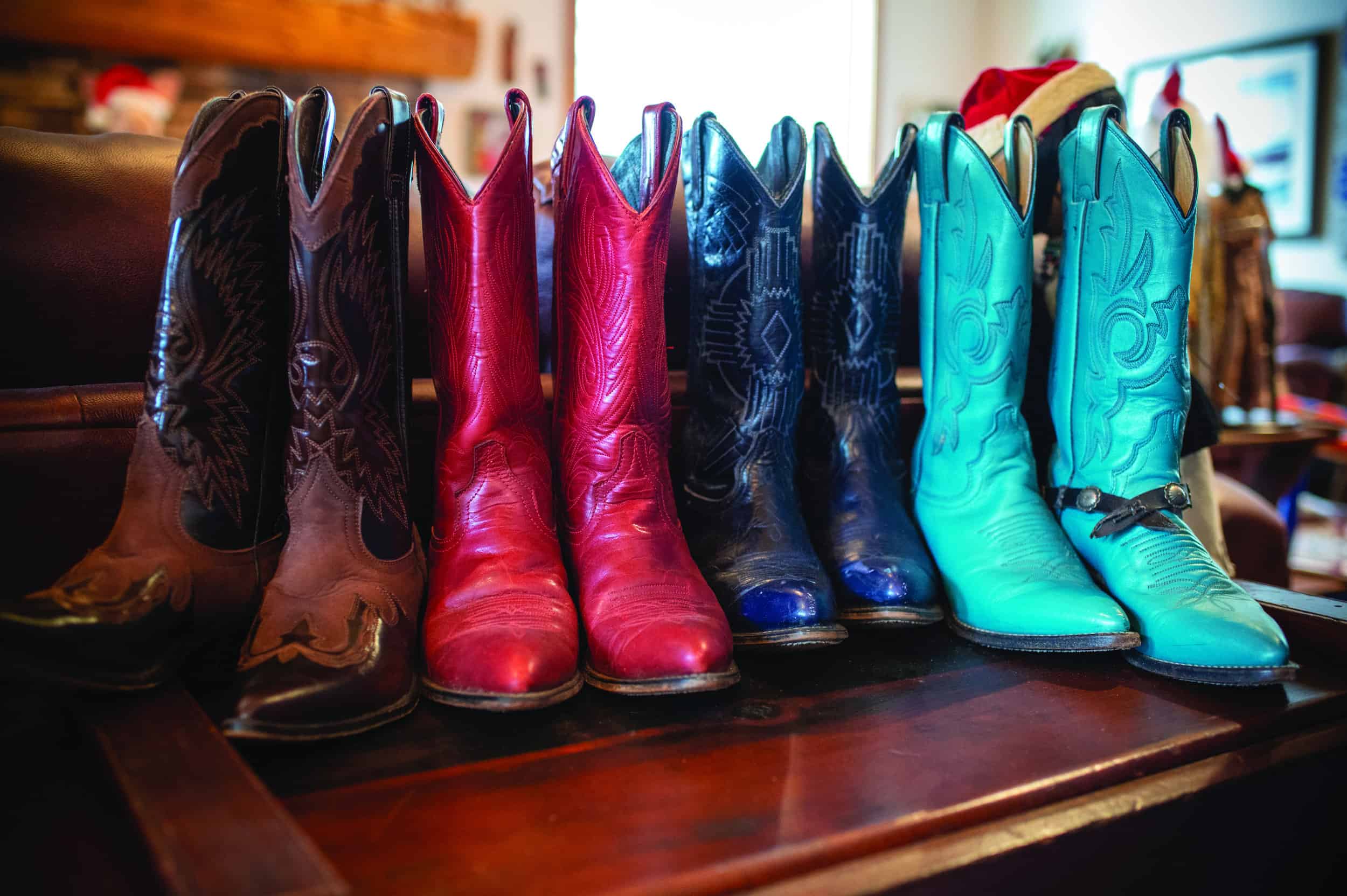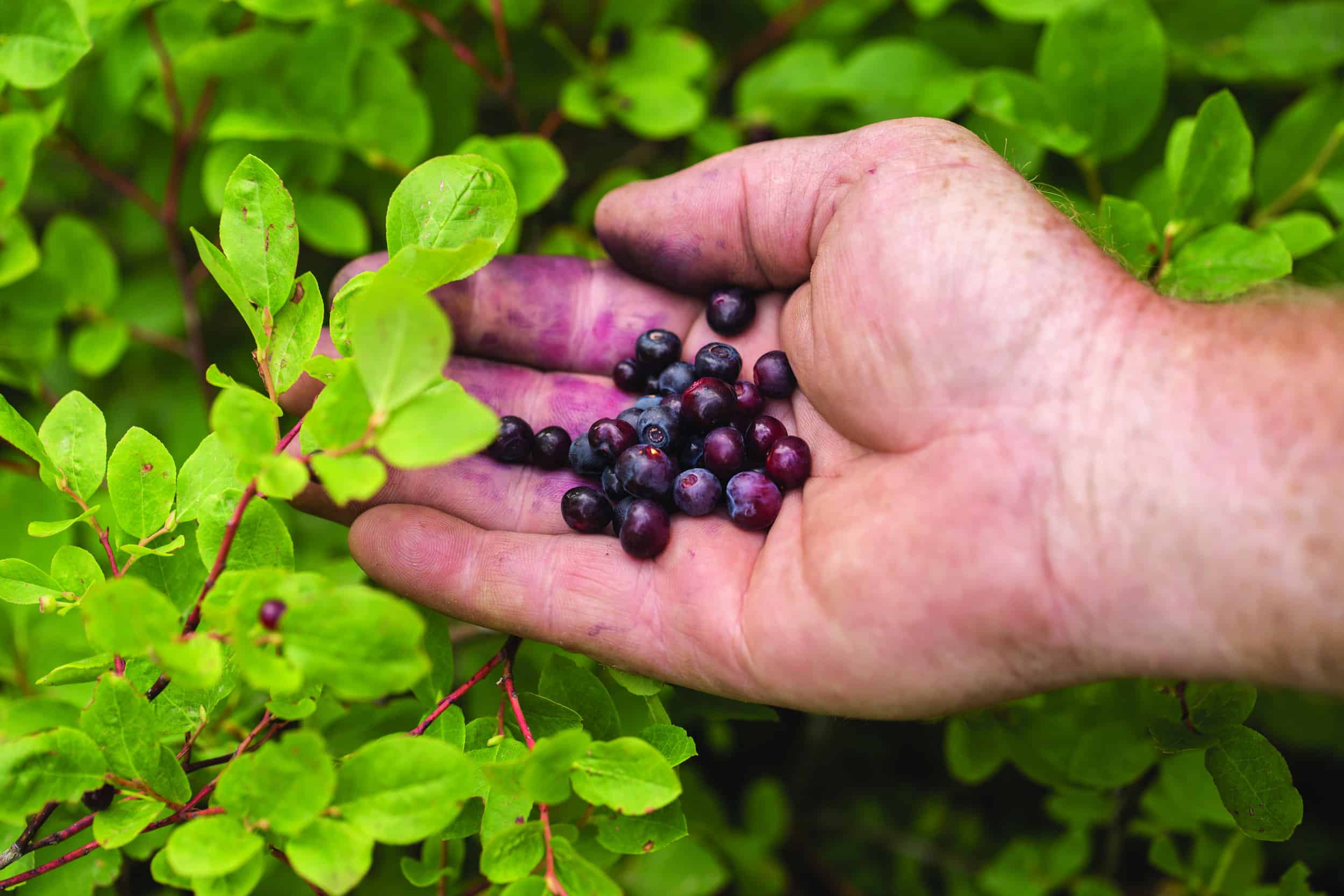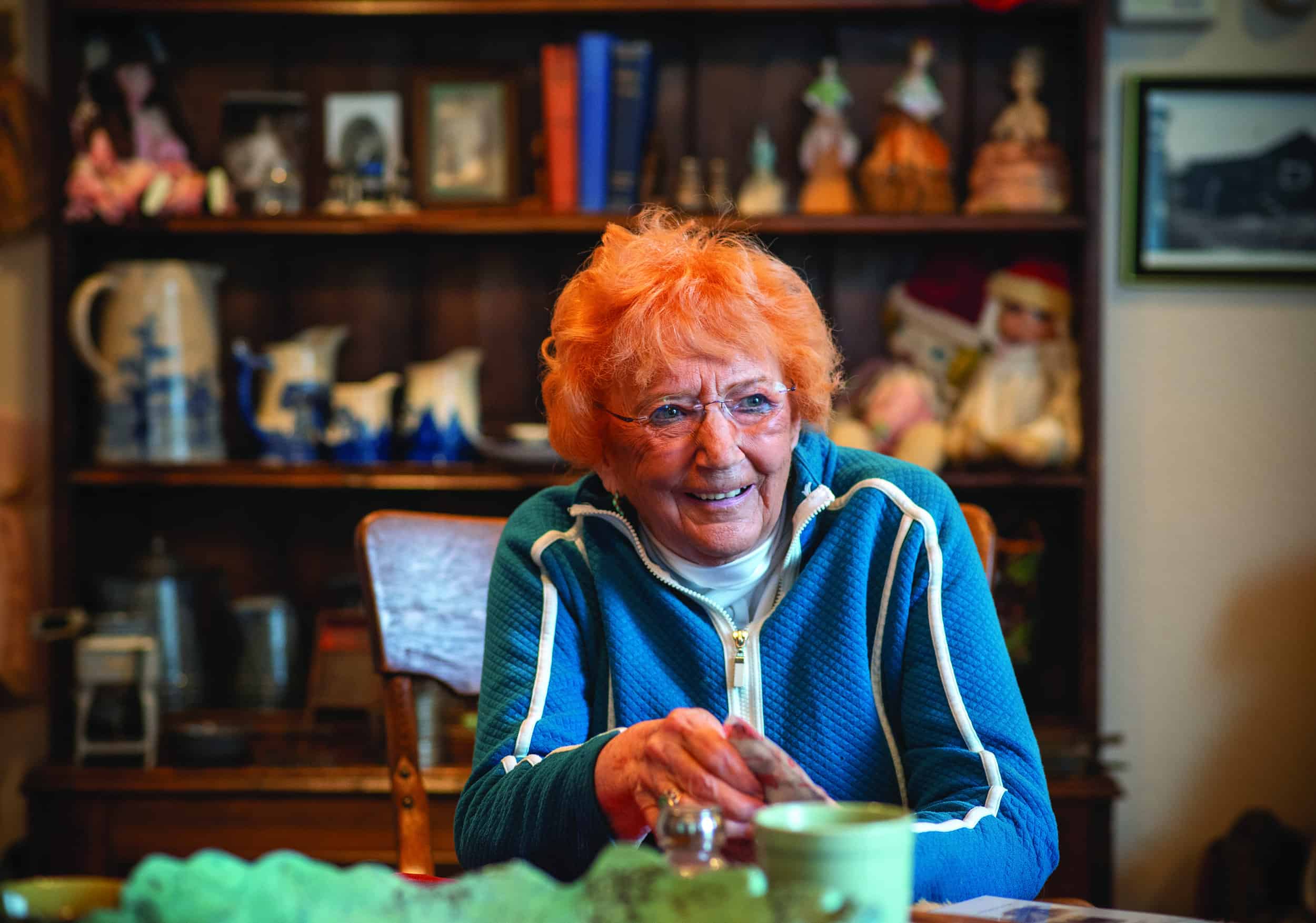Read The
Current Issue
Bonnie Budge
// By Penny Nakamura
At 91 years old, Bonnie Budge is still a force to be reckoned with in Jackson Hole. She says her no-nonsense attitude toward life was forged in the valley long before the arrival of “all the conveniences we have today.” Budge’s grandparents and parents were part of the original families that first homesteaded the area in the late 1800s, in an area now known as Mormon Row. By the time Bonnie was born in 1931 (to Joseph and Chloe May), her father had already purchased his own 160 acres between Mormon Row and the town of Kelly. It was on this expansive stretch of land, the JM Ranch, that Budge and her six siblings grew up, learning to ride horses, ski, and generally survive in the massive shadows of the Tetons. “When you grew up the way we did, we had to learn to be very resourceful,” says Budge, who now lives in East Jackson (her family moved into town when she was 12 because the Jackson school was better than the Kelly school). “My siblings and I all agreed that when you’re growing up on a ranch, you can’t get into too much trouble, because if you do, you better know how to get out of it, or you won’t survive.” Budge has lived in Jackson Hole her entire life. Though she’s traveled extensively and enjoyed many places around the globe, she says she always comes back to the most spectacular place she calls home, the Tetons.
“My dad used to say, ‘If you’re on your own two feet, you help those who can’t be on their own feet yet.”
Here she shares highlights from her Jackson Hole Life.

KELLY AND MORMON ROW
The JM Ranch, east of Blacktail Butte, was not in the heart of Mormon Row, but Budge says that when the weather was good, her family would attend church there. Today Mormon Row is part of Grand Teton National Park and recognized as the Mormon Row Historic District. The district was added to the National Register of Historic Places in 1997. (The oft-photographed Moulton Barn is part of Mormon Row.) In the late 1930s, Budge’s dad bought an additional 500 acres adjacent to his original 160 acres. He leased this land to farmers who grew wheat, hay, and alfalfa. “My father paid 500 dollars for that parcel; it was a dollar an acre,” says Budge.
HELPING THE COMMUNITY
Budge says when they owned the Western, she saw many women, including some of her employees, “who got the hell beaten out of them.” She knew she had to help. “We set up one of the first permanent women’s shelters in Jackson at one of our trailers, which gave them a safe place to stay and sleep,” she says. Today, that women’s shelter has matured into the Community Safety Network, a nonprofit that has helped hundreds of women escape their abusers. (Budge still occasionally counsels battered women via the nonprofit’s crisis hotline.) During the height of the Covid pandemic, Budge, who owns rental properties including a mobile home park in East Jackson, provided rental forgiveness to 35 tenants. “My dad used to say, ‘If you’re on your own two feet, you help those who can’t be on their own feet yet,’” Budge says. “I remember my family was always trying to take care of somebody.”

DANCING
Bonnie May and Orin Budge “courted” for four years before getting married in 1948. Their courtship included dancing at the Million Dollar Cowboy Bar and the Wort Hotel. “Back then we did something called the ‘Jackson Hole stomp.’ It was a cross between cowboy meets rockabilly,” says Budge. The dancing continued after they had 5 sons, 12 grandkids, and 16 great grandkids. “Orin and me, we danced a million miles together. He used to tell me, ‘Once a year, one day of the year, we’ll do anything you want to do.’ I always wanted to dance, and we were always dancing, our entire lives together we kept dancing.” Orin died in 2010, after 63 years of marriage.

THE EARLY DAYS IN JACKSON HOLE
The cover of Virginia Huidekoper’s 1978 photography book documenting local life, The Early Days in Jackson Hole, is of Budge’s father on a bucking bronc with the Tetons in the distance. To this day, Budge has a framed version of this photo hanging in her house. “My father was a calm, reasonable, and hard-working man, and we worked hard right alongside him in those days—it was just what was expected of you; we never questioned it,” she says.

HUCKLEBERRIES
“I still love huckleberry picking,” says Budge. Of course, winter is not huckleberry-picking season, but berries picked the prior summer can be canned and frozen and eaten year-round. “I just finished eating a quart and a half of them. I eat a handful with my ice cream, it’s delicious,” she says. Huckleberries, which have a sweet-tart flavor, were gathered for centuries by Native Americans for food and to use as medicine and grow in the wild around Jackson Hole. (Attempts to cultivate the berry have been unsuccessful.) Growing up, Budge, her mother, and her mother’s friend Ida Chambers took a wagon hitched to a team of horses up Blacktail Butte to pick them. “Our mother would tell us to put them in the buckets, but we probably ate more than we put in the buckets,” Budge says. The berries that Budge and her siblings didn’t eat were canned.
SCHOOL
The school Budge attended from age 12 through 16 was on South Jackson Street in downtown Jackson. (Today it’s the site of New York City Subs.) “After school, if we had a nickel, we would walk over to the Jackson Hole Drugstore and order up a Black Cow,” she says. “It was one scoop of ice cream, lots of chocolate syrup, and a little seltzer water.” JH





